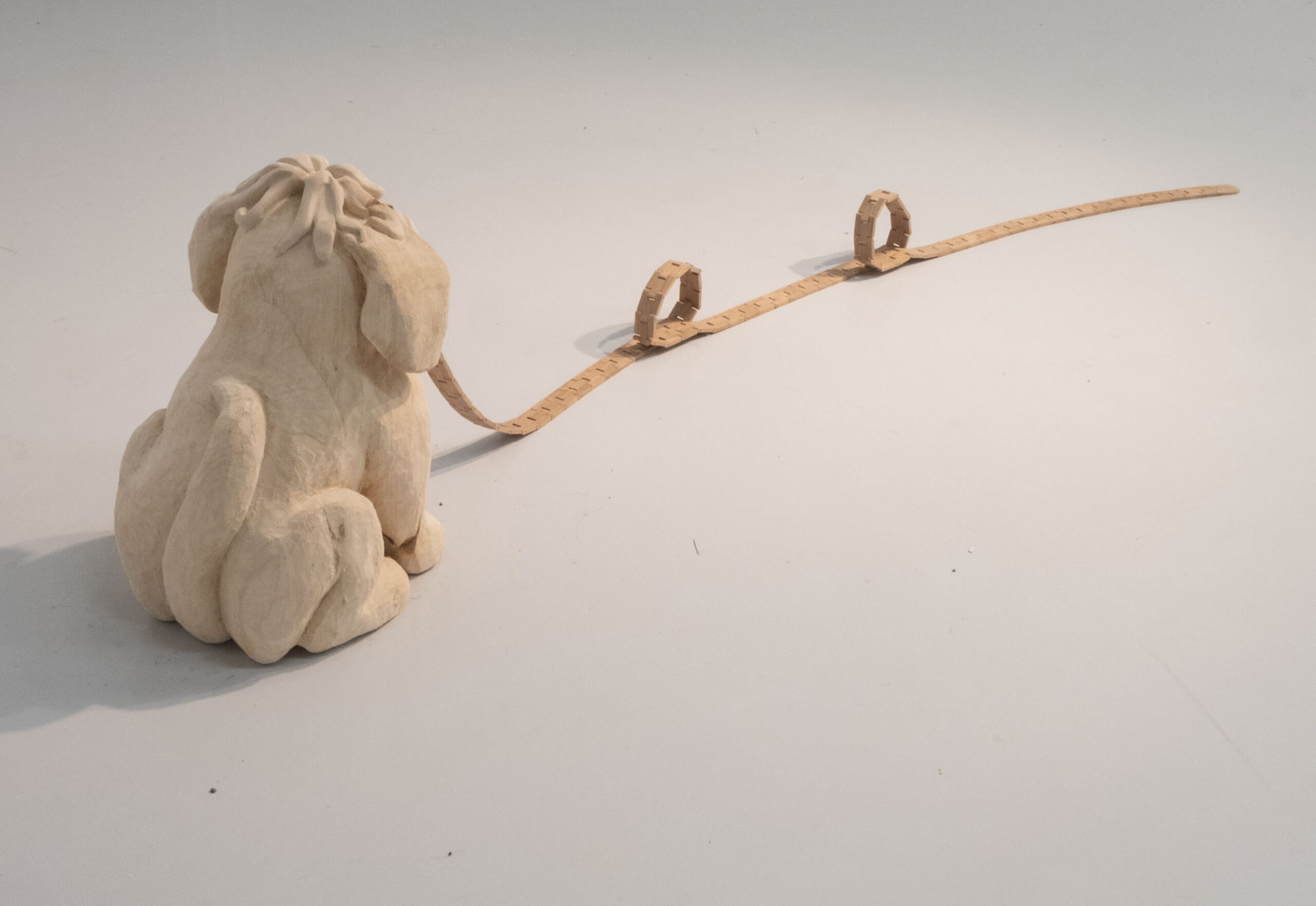Shih Tzu in situ
14________29 oct.
VERNISSAGE LE 14 OCT. 18H À 21 H
Shih Tzu in situ est une création en bois faisant partie d’un corpus sculptural plus large, le projet multidisciplinaire Parc à chien. Composé principalement de sculptures, le projet compte également des dessins et des textes conçus par Myriam Simard-Parent.
Le projet reprend la figure du chien afin d’explorer la taille directe ainsi que d’autres techniques en ébénisterie. Des associations logiques ou absurdes sont alors soulevées entre son pelage et des essences de bois, entre sa posture et des méthodes d’assemblage, entre ses comportements et des formes géométriques.
L’artiste se laisse guider par deux questions : comment un chien peut-il devenir une sculpture?
Et comment, dans le cas du Shih Tzu, peut-il devenir in situ ? Inspirée par les chiens qui tirent leurs langues pour réguler leur température, Myriam Simard-Parent propose ici un chien taillé en bois dont la langue, longue et malléable, s’adapte d’un environnement à l’autre.
Dans le cadre de Station libre, l’artiste déploie sa sculpture en fonction des spécificités de l’espace. Le public, quant à lui, demeure libre d’imaginer les multiples variations que pourrait prendre son installation, ici et ailleurs.
C’est par le biais du photomontage que l’artiste explore ensuite le potentiel in situ de sa sculpture au travers de configurations spatiales à plus grande échelle. Dans ces compositions numériques, la langue du Shih Tzu s’entremêle avec certaines œuvres aux proportions monumentales telles que la Spiral Jetty (1970) de Robert Smithson et la Running Fence (1976) de Christo et Jeanne-Claude. Par cette juxtaposition d’images, l’artiste interroge le décloisonnement de l’espace domestique causé par la pratique du land art et établit une filiation entre la domestication animale et environnementale.


ENGLISH BELLOW
Shih Tzu in situ is a wood creation part of a larger sculptural body, the multidisciplinary project Dog Park. Primarily composed by sculptures, the project also involves drawings and texts conceived by Myriam Simard-Parent.
The project takes up the figure of the dog in order to explore direct carving as well as other techniques of woodworking. Both logical and absurd associations are made between its fur and different wood essences, between its posture and assemblage methods, between its behaviors and geometric shapes.
The artist is guided by two questions: how can a dog become a sculpture? And how, in the case of the Shih Tzu, can it become in situ? Inspired by the dogs that stick out their tongue to regulate their temperature, Myriam Simard-Parent proposes a dog made of wood whose tongue, long and malleable, can adapt from one environment to the other.
In the context of Station libre, the artist deploys the sculpture in accordance with the specificities of the space. The public, on the other hand, remains free to imagine the different variations that could take up the installation, here and elsewhere.
It is through photomontage that the artist then further explores the in situ potential of her sculpture throughout spatial configurations of a larger scale. In her compositions, the tongue of the Shih Tzu becomes intertwined with some monumental artworks such as Robert Smithson’s Spiral Jetty (1970) and Christo and Jeanne-Claude’s Running Fence (1976). By this juxtaposition, the artist questions the decompartmentalization of the domestic space caused by the practice of land art and establishes a filiation between animal and envrionmental domestication.




